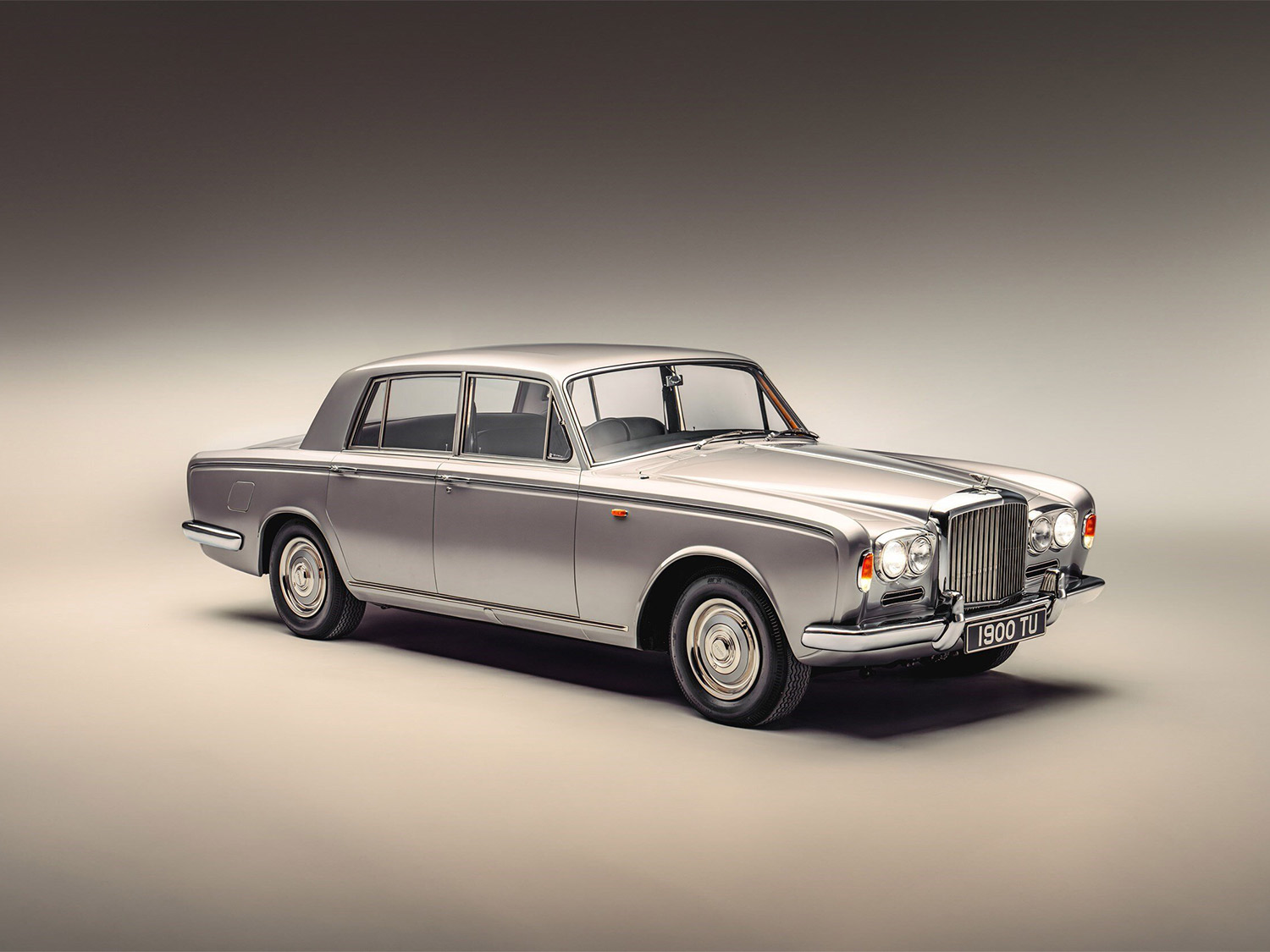The world’s oldest Bentley T-Series, a standard saloon in Shell Grey, has returned to the company’s headquarters in the English town of Crewe after 59 years.
Carefully recommissioned and retaining much of its original components and running gear, it takes its place in the Bentley Heritage Collection of road- and race-cars that together describe all 105 years of Bentley’s history.
T-Series chassis number SBH1001 was used as a company trials car and featured in the original press coverage following the model launch at the 1965 Paris Salon de l’Auto.
When found under a cover in storage, the car had not run for decades and was missing several key areas – including its entire interior.
The car’s significance as the first T-Series – or equivalent Rolls-Royce Silver Shadow – off the production line prompted the decision to recommission it, preserving as much of the original car as possible.
“The T-Series is one of the final two pieces of the puzzle to complete our rejuvenated Heritage Collection,” explained Mike Sayer, Head of the Bentley Heritage Collection.
“Our Chief Communications Officer, Wayne Bruce and I quite literally found it under a tarpaulin in the back of a warehouse, and, given it was the first-of-line chassis, we knew we had to save it.
“Together with our T-Series Mulliner Coupe, this revitalised sedan completes the Bentley heritage story of the 1960s and 1970s, and is now an outstanding example of the model, which was the first Bentley to use a unitary monocoque construction.”
After a group of Bentley apprentices started the process of dismantling and assessing the car, the recommissioning of the T-Series was entrusted to the expert team at P&A Wood, specialists in the preservation and restoration of classic Bentleys and the company’s partner for Heritage Collection projects.
Louise Wood, daughter of co-founder Andrew Wood, led the project, supported by Coachwork manager Dave Lowe – a P&A Wood veteran of 23 years.
Restored to Prime Condition
Taking stock of the T-Series Bentley, key elements of the drivetrain proved to be in surprisingly good condition. The engine burst into life after a 15-year silence, needing only a thorough service, and the gearbox simply required minor adjustment. The rear axle, too, was in a good state and only needed new seals.
Major challenges for the team included a missing dashboard; no interior trim; a wiring loom in pieces without a detailed diagram; corrosion around the rear subframe and previous poor-quality crash repairs.
With few replacement parts available off-the shelf, the team sourced a donor vehicle that was at the end of its life. As the specification of the T-Series evolved over the years, it was important that the donor should also be an early model.
Every detail was discussed and pored over, right down to the correct (Rolls-Royce) logo on the seat belt buckles and the lack of wing mirrors.
The T Series featured innovative vibration-deadening Vibrashock mounts and a two-circuit hydro-pneumatic ride height control, all of which were thoroughly overhauled. All hydraulic hoses were replaced, and unique components like the brake distribution valves were restored to full working condition. Rewiring and fitting the dashboard proved a major undertaking, requiring huge amounts of time and perseverance.

Meanwhile the paintwork was stripped, revealing poorly executed accident repair work and inconsistent panel gaps. One rear wing was corroded and had to be replaced, after which the entire vehicle was given multiple coats of 2k high build primer, each coat being carefully sanded down once dry.
“We spent a lot of time softening the panel edges, so they don’t look carved out of filler,” Dave Lowe explained.
“And though we’re using modern two-pack finishes, we tried to do everything in the old Crewe way.”
That included a final sand down with 8000 grit abrasive followed by machine polishing. The brightwork and bumpers were cleaned and polished, but not re-chromed – preserving the original patina.
That story now begins a new chapter, as the T-Series is reunited with its former press office registration number of 1900 TU as the latest addition to the Heritage Collection.
Along with the 45 other cars in the Collection, the T-Series will live on Bentley’s campus in Crewe on permanent display and kept in running, road-legal condition to enable driving when needed.
The Bentley T-Series
In 1958, work began on designing the first monocoque Bentley and Rolls-Royce, destined to replace coachbuilt bodies underpinned by a separate chassis. The result was the car sold by Bentley as the T-Series and by Rolls-Royce as the Silver Shadow.
By 1962, John Blatchley – famous for styling the R-Type Continental – had completed a new exterior design for a steel and aluminium monocoque body. The design improved on the passenger space of the preceding S3, but with the overall car now seven inches shorter, five inches lower and three-and-a-half inches narrower.
Using the freshly developed 225 bhp, 6.23-litre V8 engine, seven prototypes undertook significant testing including endurance runs of more than 100,000 miles. At the time the engine achieved the highest specific output by weight of any production car in the world of 2.7 lb/hp (1.2 kg/hp).
Design innovations included separate subframes to carry the engine and transmission, suspension, steering and rear axle assemblies, with ‘Vibrashock’ rubber sub-frame mounts developed to isolate road noise and vibration.
The Bentley T-Series was hailed as a clear example of revolutionary engineering, given it was the first Bentley to move away from a separate chassis build. And its relatively lightweight construction gave impressive performance for a four-door sedan in 1965, with a maximum speed of 115 mph and 0-62 mph achieved in 10.9 seconds.
1,868 examples of the first-generation T-Series were produced, with a pre-tax list price of USD 15,190 and the majority being standard four-door saloons.
For more information, please visit www.bentleymotors.com.
























